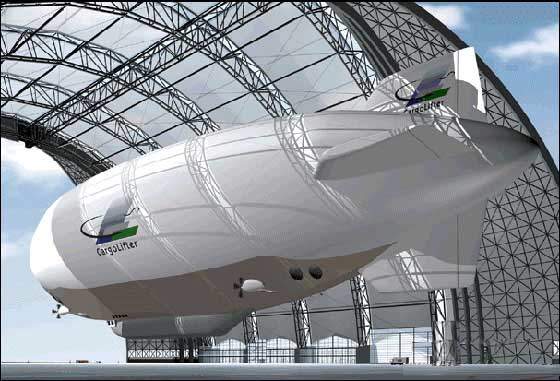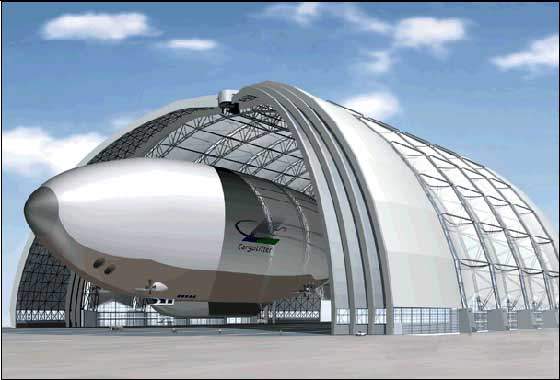


- #Cargohopper 102 cargolifter skin
- #Cargohopper 102 cargolifter full
- #Cargohopper 102 cargolifter crack
As of May 30, when CargoLifter went public on the Frankfurt Stock Exchange, the company was worth almost $180 million. Von Gablenz explained these things to the businessmen and bureaucrats, and it worked.
#Cargohopper 102 cargolifter skin
Its taut white skin could even function as a giant outdoor screen - by day bearing commercial messages, by night showing movies to the crowds below.
#Cargohopper 102 cargolifter full
The CL160 would weigh 550 tons, and its 16 turbine engines would allow it to travel, between refuelings, a full 6,000 miles at 60 mph, cruising at altitudes as high as 6,000 feet. It would have 77 times the volume and mass of a Fuji blimp, he told them, making the Japanese dirigible look like a mere soap bubble. Then, in 1996, along came von Gablenz, a kind of Baron von Blimphausen, appealing to national pride, mesmerizing German bankers and government officials with visions of the CL160. Why Germany? Mainly because the nation never quite got over the promise of the Hindenburg, the 800-foot luxury zeppelin that blew up in New Jersey in 1937 when its hydrogen lift-gas ignited. "Germany is the only country in the world that could do something like this," says Tim Smith, CargoLifter's principal research engineer. In the age of the jumbo jet, the notion of a giant cargo airship plowing through the skies is at once crazy and shrewd, qualities that have prompted an impressive array of aerospace scientists and transportation experts to quit good jobs in the US, Britain, and elsewhere and move to Brand to take part in the baron's irresistible Wagnerian dream. This is the CargoLifter Homeport, the Cape Canaveral of the best-funded and most credible lighter-than-air project in 60 years. We're located on a 1,000-acre abandoned Soviet airbase near the hamlet of Brand in the former East Germany. But if everything goes according to plan - and with a project this grandiose, it probably won't - by 2002 a helium-filled knockwurst the size of an aircraft carrier, the biggest flying machine in history, will take off from where von Gablenz and I now stand. That's because, so far, the thing doesn't exist, except on the drawing boards at CargoLifter AG, the German company von Gablenz heads. My eyes obediently follow his, looking for the big magumba, but all I see is eastern German cumulus. He answers the tough questions about his grand project with a riddle, then looks to the heavens as if gazing upon an 850-foot-long, 21-story-high airship called the CL160. He looks up at the sky, then says, "Yes, but there are many kinds of tears." This is a von Gablenz tactic, frequently deployed. Picture a half brother of Plácido Domingo who didn't get thick in the middle or grow a beard. The 48-year-old German aristocrat-businessman - with his dark hair, brown eyes, and splendid jet-black suit - looks more like a señor than a freiherr. When I ask Carl-Heinrich Freiherr von Gablenz, or "Baron" von Gablenz, why he's so sure that his revival of the dream won't also end in tears, he shows me a tight smile. The century-old vision of giant, lighter-than-air flying machines has "always ended in tears." They were shed for crashed airships and their victims and for a dream denied - a skyship with the scale and majesty of an oceangoing vessel.
#Cargohopper 102 cargolifter crack
The narrow width allows operation in confined areas.ĪTXs in their category are probably the only electric vehicles to maintain high performance even on difficult climbs or terrain.A German aristocrat-businessman is relaunching the age of the airship, armed with millions in the bank and a team of crack engineers. The brakes with energy recovery ensure high safety standards and perfect manoeuvrability when descending, as well as lower consumption.ĭepending on customer requirements and the chosen configuration.ĭepends on the model chosen: (recommended for this purpose) ATX 340E - ATX 330E - ATX 320EĢ000 kg on road - 4500 kg in private area Reduced mode allows optimum use of available torque and greater driving control. The three-phase motors provide very high performance and simultaneously energy saving, thus lowering consumption. These Alkè delivery vehicles are used for transporting fruit from fruit and vegetable markets to shops in old town centres, industries, railways, airports, for delivering parcels to shops and for collecting packaging and paper. The containers are loaded outside the historic centre at a sorting centre and then towed by Alkè electric vehicles to the historic city centre. 8 containers of this type can fit on a trailer measuring 13.60 metres. The three trailers are actually 3 separate containers and can be placed on top of the various trailers by means of a forklift truck. The cargo consists of the Alkè tractor and three trailers.


 0 kommentar(er)
0 kommentar(er)
